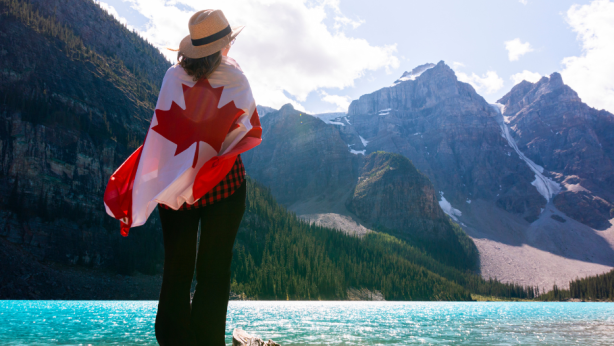A guide to Visit National and Provincial Parks in Canada

**Please review the disclaimer at the end of this document before reading or using this guide.
Canada is home to some of the most breathtaking national and provincial parks in the world, offering vast landscapes, diverse wildlife, and a wide range of outdoor activities. Visiting these parks is a great way for new immigrants to experience the natural beauty of Canada, connect with nature, and explore the country’s rich cultural and natural heritage. This guide provides information on how new immigrants can visit and enjoy national and provincial parks in Canada.
Step 1: Understand the Difference Between National and Provincial Parks
- National Parks:
- Managed by Parks Canada, national parks are protected areas that preserve the natural environment and provide opportunities for public enjoyment. These parks are spread across the country and include iconic destinations like Banff, Jasper, and Gros Morne.
- National parks focus on conservation and education, often offering interpretive programs and facilities for visitors.
- Provincial Parks:
- Managed by individual provinces and territories, provincial parks also protect natural areas and offer recreational opportunities. Examples include Algonquin Provincial Park in Ontario, Pacific Rim National Park Reserve in British Columbia, and Mont-Tremblant National Park in Quebec.
- Provincial parks vary widely in size and amenities, with some offering backcountry experiences and others providing facilities for camping, picnicking, and swimming.
Step 2: Choose the Right Park for Your Visit
- Popular National Parks:
- Banff National Park (Alberta): Canada’s first national park, known for its stunning mountain scenery, turquoise lakes, and outdoor activities like hiking, skiing, and wildlife viewing.
- Jasper National Park (Alberta): The largest national park in the Canadian Rockies, offering opportunities for hiking, wildlife spotting, and stargazing in one of the world’s largest dark sky preserves.
- Gros Morne National Park (Newfoundland and Labrador): A UNESCO World Heritage Site featuring dramatic landscapes, fjords, and geological wonders.
- Prince Edward Island National Park: Known for its red sand beaches, dunes, and cultural sites related to “Anne of Green Gables.”
- Popular Provincial Parks:
- Algonquin Provincial Park (Ontario): Famous for its canoeing routes, hiking trails, and vibrant fall colors, Algonquin is a haven for nature lovers.
- Pacific Rim National Park Reserve (British Columbia): Located on Vancouver Island, this park offers rugged coastal scenery, rainforest walks, and surfing opportunities.
- Mont-Tremblant National Park (Quebec): A popular destination for outdoor activities year-round, including hiking, canoeing, and skiing.
- Consider Your Interests:
- If you’re interested in hiking, look for parks with well-marked trails suitable for your skill level.
- For wildlife enthusiasts, choose parks known for their diverse ecosystems and opportunities to see animals in their natural habitats.
- If you prefer water-based activities, select parks with lakes, rivers, or coastlines for canoeing, kayaking, or swimming.
Step 3: Plan Your Visit
- Research Park Details:
- Visit the Parks Canada website for information on national parks, including park maps, visitor centers, and activity guides. For provincial parks, check the relevant provincial park websites.
- Review park rules and regulations, including any restrictions on campfires, fishing, and pet access.
- Check Accessibility:
- Many parks offer accessible facilities and trails for visitors with mobility challenges. Look for parks with accessible campgrounds, boardwalks, and picnic areas.
- Seasonal Considerations:
- Canada’s parks offer different experiences depending on the season. Summer is ideal for hiking, camping, and water activities, while winter offers opportunities for snowshoeing, cross-country skiing, and ice fishing.
- Check the park’s opening dates and hours, as some parks or specific areas may be closed during the off-season or for maintenance.
- Accommodation Options:
- If you plan to stay overnight, explore accommodation options including campgrounds, backcountry sites, and nearby hotels or lodges. Popular parks may require reservations for campsites, especially during peak seasons.
- For a unique experience, consider staying in oTENTik tents, yurts, or rustic cabins available in some national and provincial parks.
Step 4: Prepare for Your Trip
- What to Pack:
- Clothing: Dress in layers to accommodate changing weather conditions. Bring waterproof and windproof outerwear, comfortable hiking boots, and a hat and gloves if visiting during colder months.
- Gear: Pack essentials like a map, compass or GPS, first aid kit, insect repellent, sunscreen, and a reusable water bottle. If you’re planning activities like hiking or canoeing, bring appropriate gear such as trekking poles or life jackets.
- Food and Supplies: Bring enough food and snacks for your trip, as some parks have limited food services. If camping, pack cooking supplies, a portable stove, and bear-proof containers for food storage.
- Safety and Emergency Preparedness:
- Familiarize yourself with safety guidelines specific to the park, including wildlife safety, weather preparedness, and backcountry travel tips.
- Ensure you have a means of communication, such as a charged mobile phone or satellite device, especially if you’re visiting remote areas.
- Let someone know your itinerary and expected return time if you’re planning a backcountry or multi-day trip.
- Permits and Passes:
- Purchase a Parks Canada Discovery Pass if you plan to visit multiple national parks, which provides unlimited access to over 80 sites for a year.
- Provincial parks may have day-use fees, camping permits, or backcountry permits. Check the specific requirements for the park you’re visiting and purchase permits online or at the park entrance.
Step 5: Enjoy the Park Responsibly
- Follow Leave No Trace Principles:
- Practice Leave No Trace principles by packing out all trash, staying on designated trails, and respecting wildlife and other visitors.
- Avoid disturbing natural habitats and cultural sites, and take only photos and memories with you.
- Respect Wildlife:
- Observe wildlife from a distance and never feed animals. Use binoculars or a zoom lens to watch animals safely.
- Follow park guidelines for bear safety, including storing food properly and making noise while hiking to avoid surprising wildlife.
- Participate in Park Programs:
- Many parks offer interpretive programs, guided hikes, and educational workshops led by park rangers. These programs are a great way to learn about the park’s history, ecology, and conservation efforts.
- Engage in Activities:
- Take advantage of the activities offered in the park, such as hiking, canoeing, birdwatching, or stargazing. Many parks have designated areas for swimming, picnicking, and family-friendly activities.
Additional Tips for New Immigrants
- Language:
- Canada is a bilingual country, with English and French as official languages. While English is widely spoken, it’s helpful to know some basic French phrases, especially when visiting parks in Quebec.
- Cultural Awareness:
- Many national and provincial parks are located on traditional Indigenous lands. Be respectful of Indigenous heritage, cultural sites, and practices when visiting these areas.
- Transportation:
- If you don’t have a car, consider using public transportation options, shuttle services, or car rentals to reach the parks. Some parks offer shuttle services within the park to reduce traffic and protect the environment.
- Weather Awareness:
- Canada’s weather can be unpredictable, so always check the forecast before your visit and be prepared for sudden changes in temperature or conditions.
Visiting Canada’s national and provincial parks is a wonderful way to explore the country’s natural beauty and connect with its diverse ecosystems. By choosing the right park, planning your visit, preparing adequately, and enjoying the park responsibly, new immigrants can experience the best that Canada’s outdoors have to offer. Whether you’re seeking adventure, relaxation, or cultural enrichment, Canada’s parks provide endless opportunities for exploration and discovery. Welcome to Canada, and happy exploring!
**DISCLAIMER: This document was prepared based on information gathered from various online sources. While our aim is to provide accurate and helpful information to newcomers in Canada, Active Action cannot be held responsible for any actions, outcomes, or situations that may arise from the use of this document. We strongly recommend that you verify any details with official sources or relevant authorities if you have any doubts or uncertainties about any information provided in this document. If you have any specific questions about the information in this document, or if you notice any inaccuracies or missing information, please inform us immediately through the contact form. We will respond to you as soon as possible and/or update the information as necessary.


